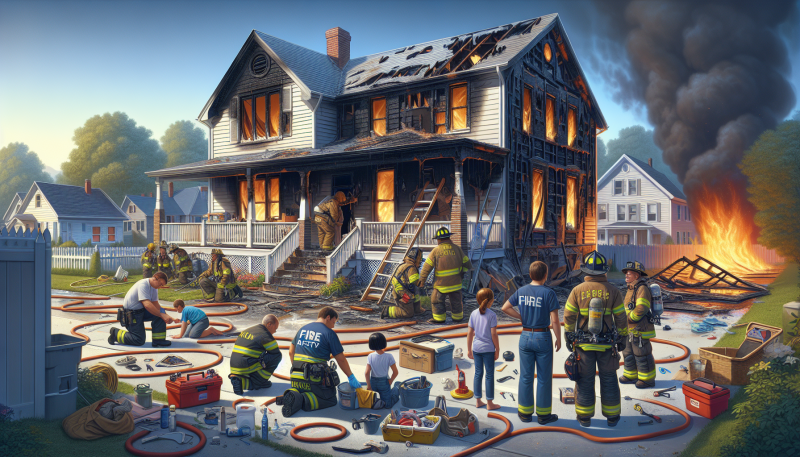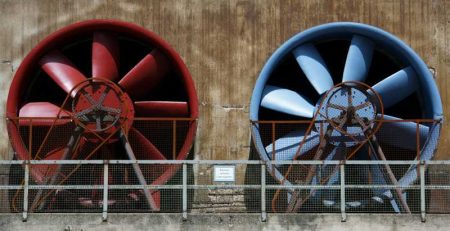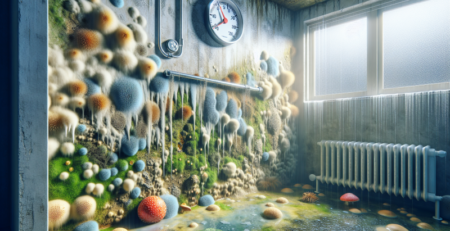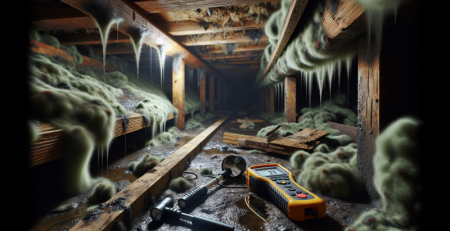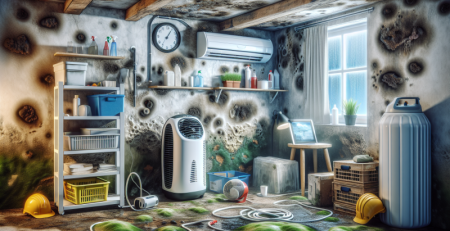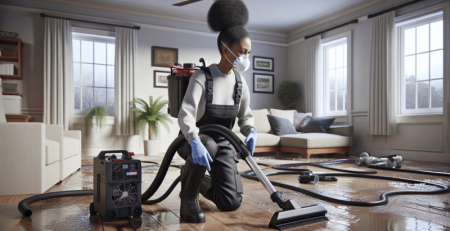Essential Tips for Fire Damage Recovery
Experiencing fire damage can be a devastating event for any homeowner, leaving behind not only physical destruction but also emotional turmoil. At Kraus Restoration, we understand the challenges that come with recovering from such a disaster. As NJ’s leaders in water damage restoration, we are committed to helping you navigate the complexities of fire damage recovery. Our mission is to restore your property and peace of mind as quickly and efficiently as possible. In this blog, we will share essential tips for fire damage recovery, focusing on effective strategies to mitigate damage, ensure safety, and expedite the restoration process. Whether you are dealing with smoke, soot, or structural damage, our expert team is here to provide 24/7 emergency services tailored to your needs. With our IICRC certified professionals and a comprehensive range of services, including fire cleanup and mold remediation, you can trust Kraus Restoration to guide you through this challenging time. Let’s explore the crucial steps you need to take for a successful recovery.
Assessing the Damage: A Step-by-Step Guide
Recovering from fire damage is a challenging and often overwhelming process. Understanding the extent of the damage is crucial to formulating an effective recovery plan. This guide will walk you through the essential steps to assess fire damage, ensuring that you can make informed decisions as you begin the recovery process.
The first step in assessing fire damage is to ensure that the area is safe. Before entering a fire-damaged building, it is vital to wait for the fire department to declare the structure safe. Fires can cause hidden hazards such as weakened walls, unstable ceilings, and toxic fumes. Once you have confirmation that it is safe to enter, you can begin the assessment process.
Start by documenting the damage. Take photographs and videos of all affected areas, including walls, ceilings, floors, and personal belongings. This documentation will be invaluable for insurance claims and restoration efforts. Be thorough in your documentation, as it will help you keep track of the damage and the recovery process.
Next, categorize the damage. Fire damage can be classified into three main types: primary damage, secondary damage, and tertiary damage. Primary damage refers to the direct impact of the fire, such as burned materials and structural damage. Secondary damage includes smoke and soot damage, which can affect areas far from the fire source. Tertiary damage involves long-term effects, such as mold growth due to water used in firefighting efforts. Understanding these categories will help you prioritize your recovery efforts.
Once you have documented and categorized the damage, it is essential to assess the structural integrity of the building. Look for signs of structural damage, such as sagging ceilings, cracked walls, or compromised foundations. If you notice any of these signs, it is crucial to consult a professional structural engineer or a fire damage restoration expert. They can provide a thorough evaluation and recommend necessary repairs.
In addition to structural damage, you should also assess the contents of the building. Determine which items can be salvaged and which are beyond repair. Items that are heavily damaged by fire or smoke may need to be discarded, while others may be cleaned and restored. For example, electronics, furniture, and clothing may be salvageable with proper cleaning techniques. It is advisable to consult with a fire damage restoration professional to determine the best course of action for your belongings.
Another critical aspect of assessing fire damage is evaluating the presence of hazardous materials. Fires can release toxic substances, including asbestos and lead, especially in older buildings. If you suspect the presence of hazardous materials, it is essential to hire a qualified professional to conduct testing and remediation.
Once you have completed your assessment, it is time to contact your insurance company. Provide them with your documentation and a detailed account of the damage. Your insurance policy may cover various aspects of fire damage recovery, including structural repairs, content restoration, and temporary housing expenses. Be sure to keep records of all communications with your insurance provider.
After filing your claim, you can begin the recovery process. This may involve hiring a fire damage restoration company to help with cleanup and repairs. Professionals in this field have the expertise and equipment necessary to handle fire damage effectively. They can assist with smoke and soot removal, structural repairs, and restoring your belongings.
In summary, assessing fire damage is a critical first step in the recovery process. By ensuring safety, documenting the damage, categorizing it, evaluating structural integrity, assessing contents, checking for hazardous materials, and communicating with your insurance company, you can lay the groundwork for a successful recovery. Remember, recovery from fire damage is not just about restoring your property; it is also about restoring your peace of mind. For more information on fire damage recovery and restoration services, visit fire cleanup and explore our about page to learn more about our commitment to helping you through this challenging time. If you need immediate assistance, do not hesitate to contact us.
Statistics show that approximately 358,500 residential fires occur in the United States each year, resulting in significant property damage and loss. According to the National Fire Protection Association (NFPA), the average property loss per fire incident is around $17,000. Understanding the scope of fire damage and taking the right steps can significantly impact your recovery journey.
For further reading on fire damage recovery, consider exploring resources from the NFPA or the American Red Cross, which provide valuable information on fire safety and recovery strategies.
Navigating Insurance Claims for Fire Damage Recovery
Recovering from fire damage can be a daunting process, and navigating the insurance claims associated with it is often one of the most challenging aspects. Understanding how to effectively manage your insurance claim can significantly impact your recovery timeline and the financial support you receive. The first step in this process is to familiarize yourself with your insurance policy. Review the coverage details to understand what is included, such as dwelling coverage, personal property coverage, and additional living expenses. Knowing the specifics of your policy will help you set realistic expectations for your claim.
Once you have a clear understanding of your coverage, it is crucial to document the damage thoroughly. Take photographs and videos of the affected areas, and make a detailed list of damaged or destroyed items. This documentation will serve as vital evidence when filing your claim. Be sure to include any receipts or appraisals for valuable items, as this can help substantiate your claim and ensure you receive fair compensation.
After documenting the damage, contact your insurance company as soon as possible to report the fire incident. Most insurance policies require prompt notification, and delays can complicate your claim. When speaking with your insurance adjuster, be clear and concise about the extent of the damage and the losses you have incurred. It is also beneficial to keep a record of all communications with your insurance company, including dates, times, and the names of representatives you speak with.
As your claim progresses, you may need to provide additional information or documentation to your insurance company. Be prepared to cooperate fully and respond promptly to any requests. This may include providing estimates from contractors for repairs or restoration services. Engaging a professional restoration company can be advantageous, as they can help assess the damage and provide detailed estimates that can support your claim. For expert assistance, consider reaching out to a reputable restoration service that specializes in fire damage recovery, such as fire cleanup.
In some cases, insurance claims can be disputed or denied. If you encounter difficulties with your claim, do not hesitate to seek assistance. You may consider hiring a public adjuster who can advocate on your behalf and help negotiate with your insurance company. Public adjusters are licensed professionals who understand the intricacies of insurance claims and can provide valuable support in ensuring you receive the compensation you deserve.
Throughout the claims process, it is essential to keep track of all expenses related to the fire damage. This includes temporary housing costs, meals, and any other expenses incurred while your home is being repaired. Many insurance policies cover additional living expenses, so maintaining detailed records will help you claim these costs effectively.
Finally, once your claim is settled, take the time to review the outcome and ensure that you are satisfied with the compensation received. If you believe the settlement is inadequate, you have the right to appeal the decision. Understanding your rights and the appeals process can empower you to advocate for yourself effectively.
Navigating insurance claims for fire damage recovery requires diligence, organization, and a proactive approach. By understanding your policy, documenting the damage, communicating effectively with your insurance company, and seeking professional assistance when needed, you can streamline the claims process and focus on rebuilding your life after a devastating fire. For more information on recovery services and support, visit our website or contact us directly through our contact page.
In conclusion, recovering from fire damage is a challenging journey that requires careful planning, emotional resilience, and a proactive approach. By prioritizing safety, documenting the damage, and working closely with professionals, you can navigate the complexities of restoration more effectively. Remember to lean on your support network and take the time to process the emotional impact of the event. With patience and determination, you can rebuild not only your physical space but also your sense of normalcy and security. Embrace the recovery process as an opportunity for renewal and growth, and take each step forward with hope and optimism. Your resilience will shine through as you move towards a brighter, fire-free future.
